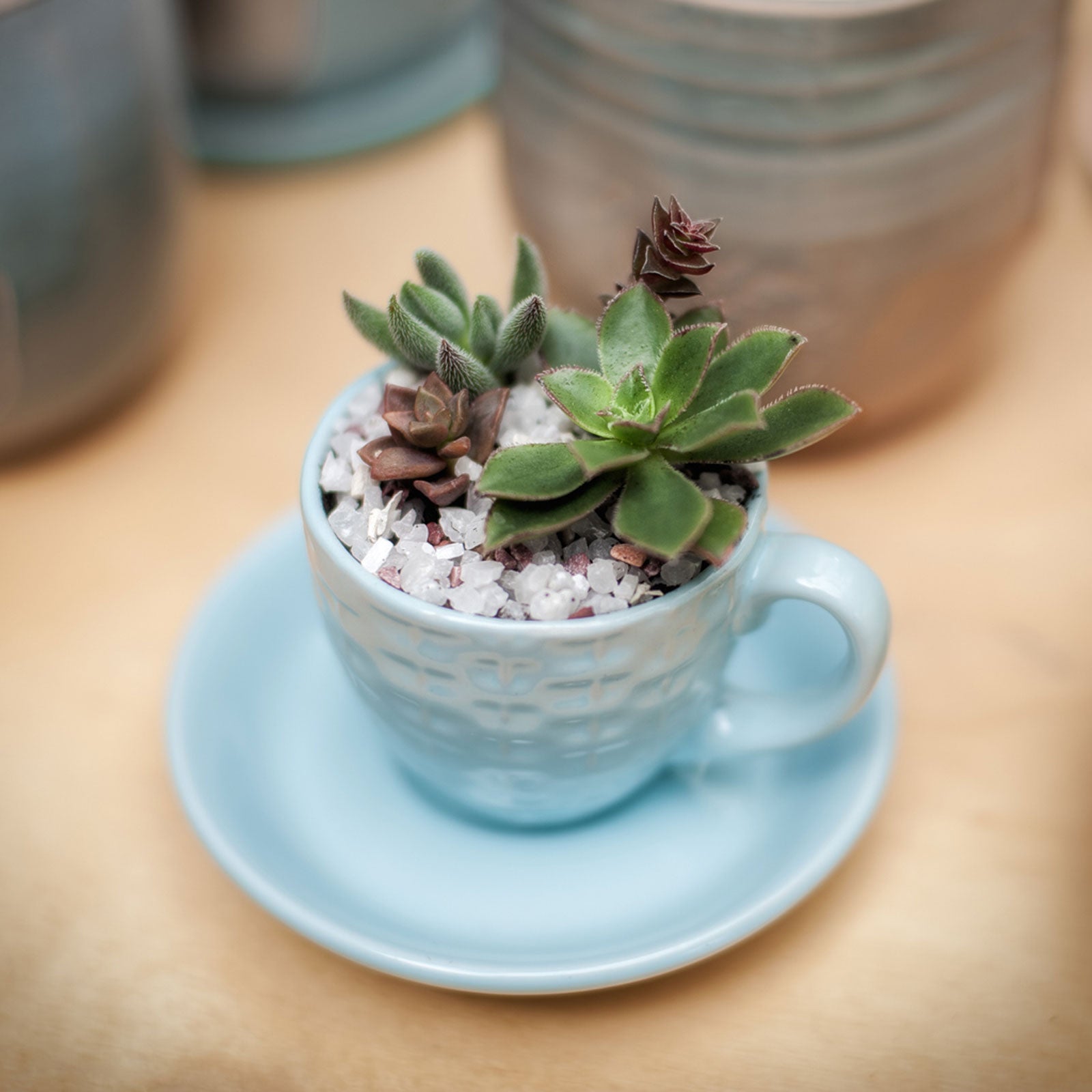Growing Teacup Mini Gardens: How To Design A Teacup Garden


The human passion for creating life-in-miniature has spawned the popularity of everything from doll houses and model trains to terrariums and fairy gardens. For gardeners, creating these small-scale landscapes is a relaxing and creative DIY project. One such project is teacup mini gardens. Using a teacup as the planter lends a certain charm and elegance to the very concept of “small.”
Teacup Fairy Garden Ideas
Even with limited skills, you can design a teacup garden that's unique and expressive. To make traditional teacup mini gardens, begin by drilling a small hole in the bottom of a discarded teacup. Place one or more tablespoons of pea gravel in the bottom of the cup. Use the saucer as a drip tray.
Next, fill the cup with good quality potting soil. Use a mix containing vermiculite, perlite or peat moss to facilitate drainage. Insert one or more teacup garden plants. Add decorations to create a small scene, if you'd like.
Fairy garden decorations can be purchased at craft stores, gardening centers and discount shops. For miniature household and tiny gardening items, try cruising the doll house aisle. Resin and plastic decorations are more durable than metal or wood. If the teacup garden will sit outside, consider applying a UV protective coating to metal or wood decorations.
If you're feeling creative, you can also use household and garden materials to make your own decorations for your teacup mini gardens. Here are few suggestions:
- Acorn caps (miniature planter, birdbath, dishes, hat)
- Blue beads (water)
- Buttons (stepping stones, tabletops and matching chairs, roof or house adornments)
- Fabric scraps (banner, flags, tablecloth, seat cushions)
- Pebbles/stones (walkways, flowerbed border, filler around plants)
- Popsicle sticks (fence, ladders, wood signs)
- Seashells (decorative “rocks,” planters, walkways)
- Thread spools (table bases)
- Twigs and sticks (trees, furniture, fencing)
Other interesting teacup fairy garden ideas include:
- Fairy house cup: Turn the teacup on its side on the saucer. Cut a circle, the same size as the teacup's rim, from doll house siding. Attach windows and doors and glue the circle to cup's rim to make a fairy house. Decorate the saucer with moss, rocks and small plants.
- Cascading flower cup: Place the teacup on its side on the saucer and plant small flowers that “spill out” of the teacup as they grow.
- Aquatic teacup mini gardens: Fill the teacup halfway with pea gravel. Finish filling with water. Use aquarium plants to create a miniature water garden.
- Windowsill herb garden: Plant herbs in matching teacups and set them on the kitchen windowsill for a practical and decorative mini garden.
Teacup Garden Plants
Ideally, you'll want to choose teacup garden plants that will grow well within the limited space of a teacup. These could be smaller species, miniature varieties, or slow-growing plants. Here are some plant suggestions you might consider:
Gardening tips, videos, info and more delivered right to your inbox!
Sign up for the Gardening Know How newsletter today and receive a free copy of our e-book "How to Grow Delicious Tomatoes".
Finally, keep your teacup garden looking its best by gently watering, protecting it from intense direct sunlight and regularly pinching and pruning the plants as needed.

Laura Miller has been gardening all her life. Holding a degree in Biology, Nutrition, and Agriculture, Laura's area of expertise is vegetables, herbs, and all things edible. She lives in Ohio.
-
 Looking For Plants To Give You The Soft And Fuzzies? Try These 5 Fuzzy Leaf Plant Options
Looking For Plants To Give You The Soft And Fuzzies? Try These 5 Fuzzy Leaf Plant OptionsLovers of texture, drama, silver foliage and tactile plants will adore these special sensory garden additions. These fuzzy leaf plant options will leave you all aglow
By Susan Albert
-
 Get Ready For A Summer Of Hummers! Grow These Full Sun Hummingbird Plants and Flowers
Get Ready For A Summer Of Hummers! Grow These Full Sun Hummingbird Plants and FlowersIf you’re lucky enough to enjoy a sunny backyard, make sure you are maxing out on your pollinator opportunities and grow these full sun hummingbird plants and flowers
By Tonya Barnett